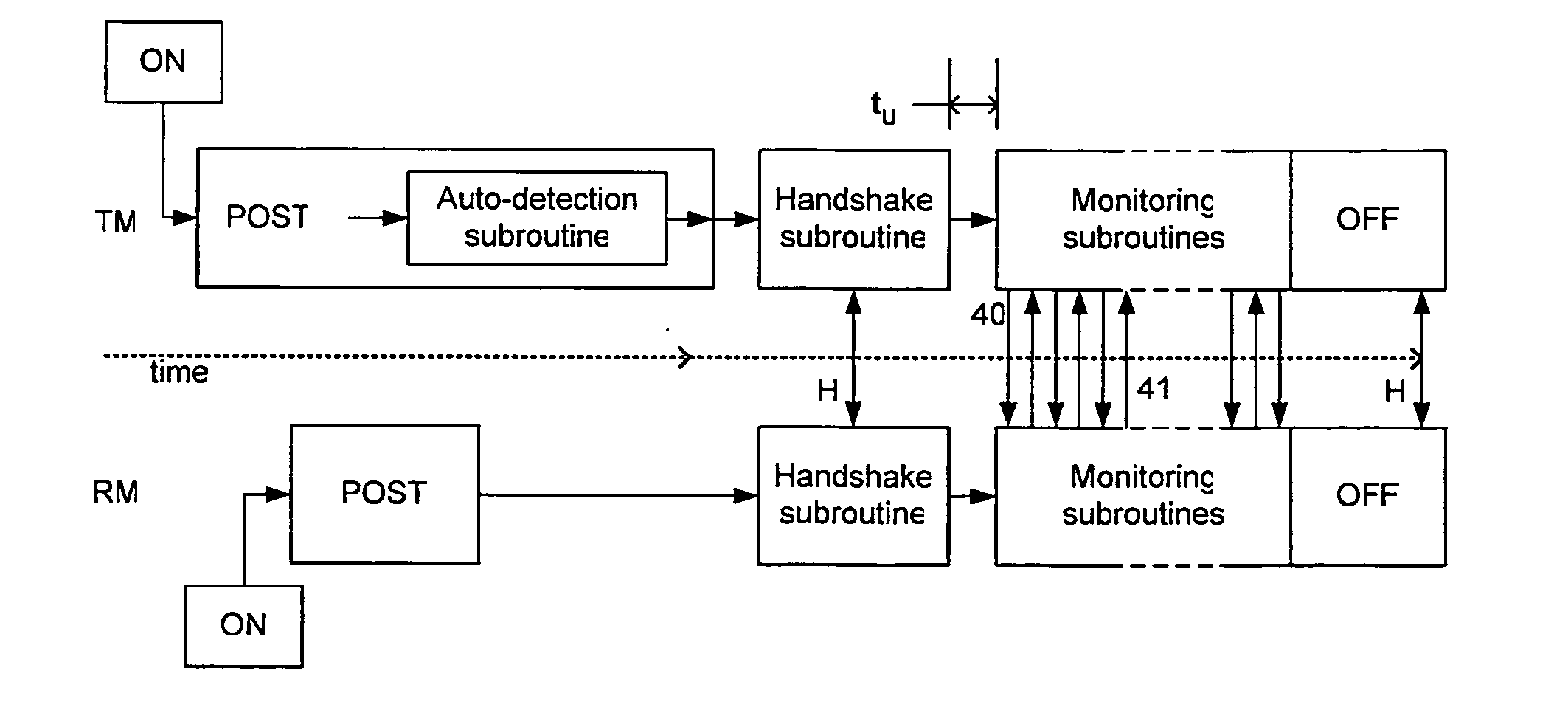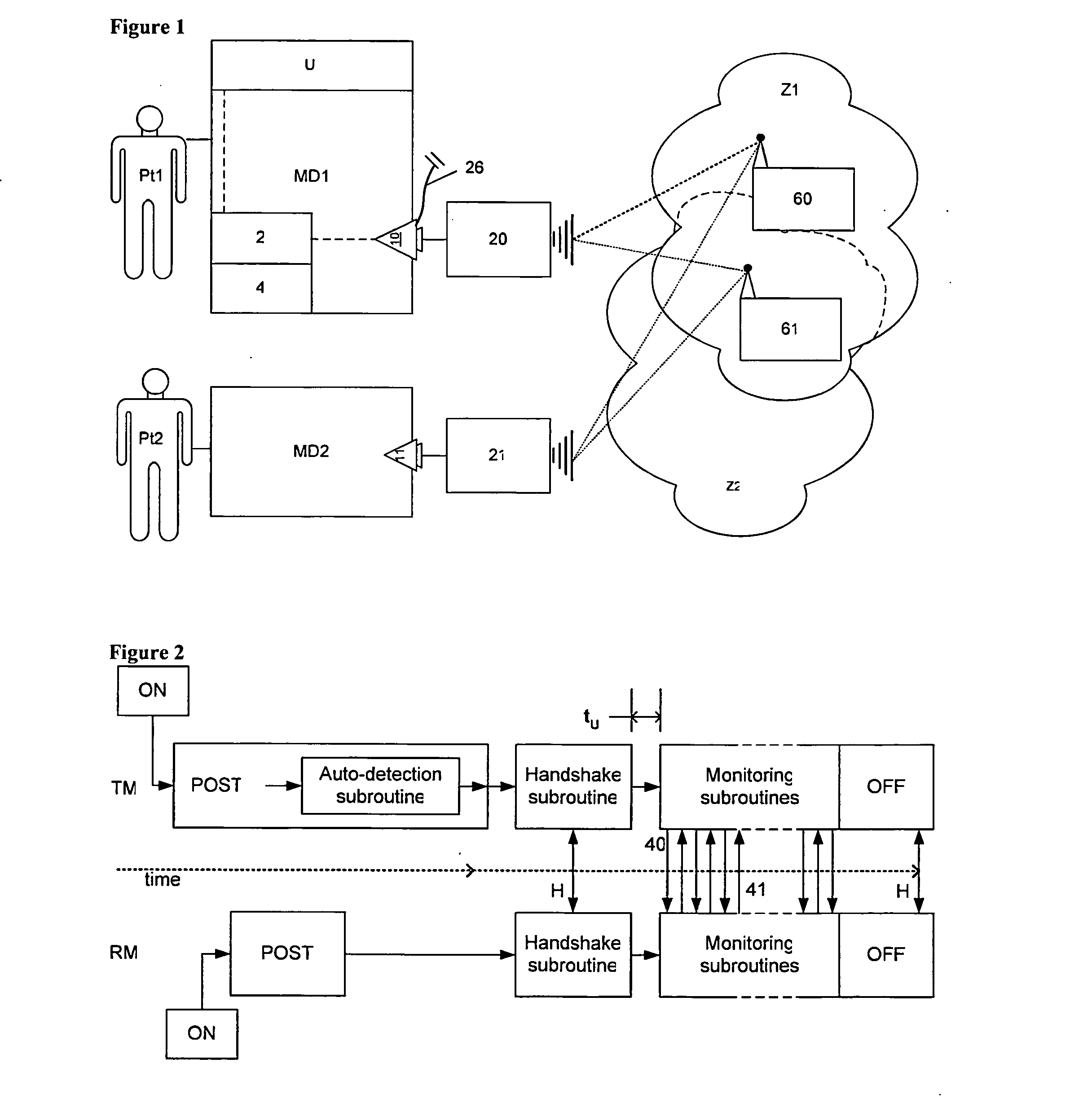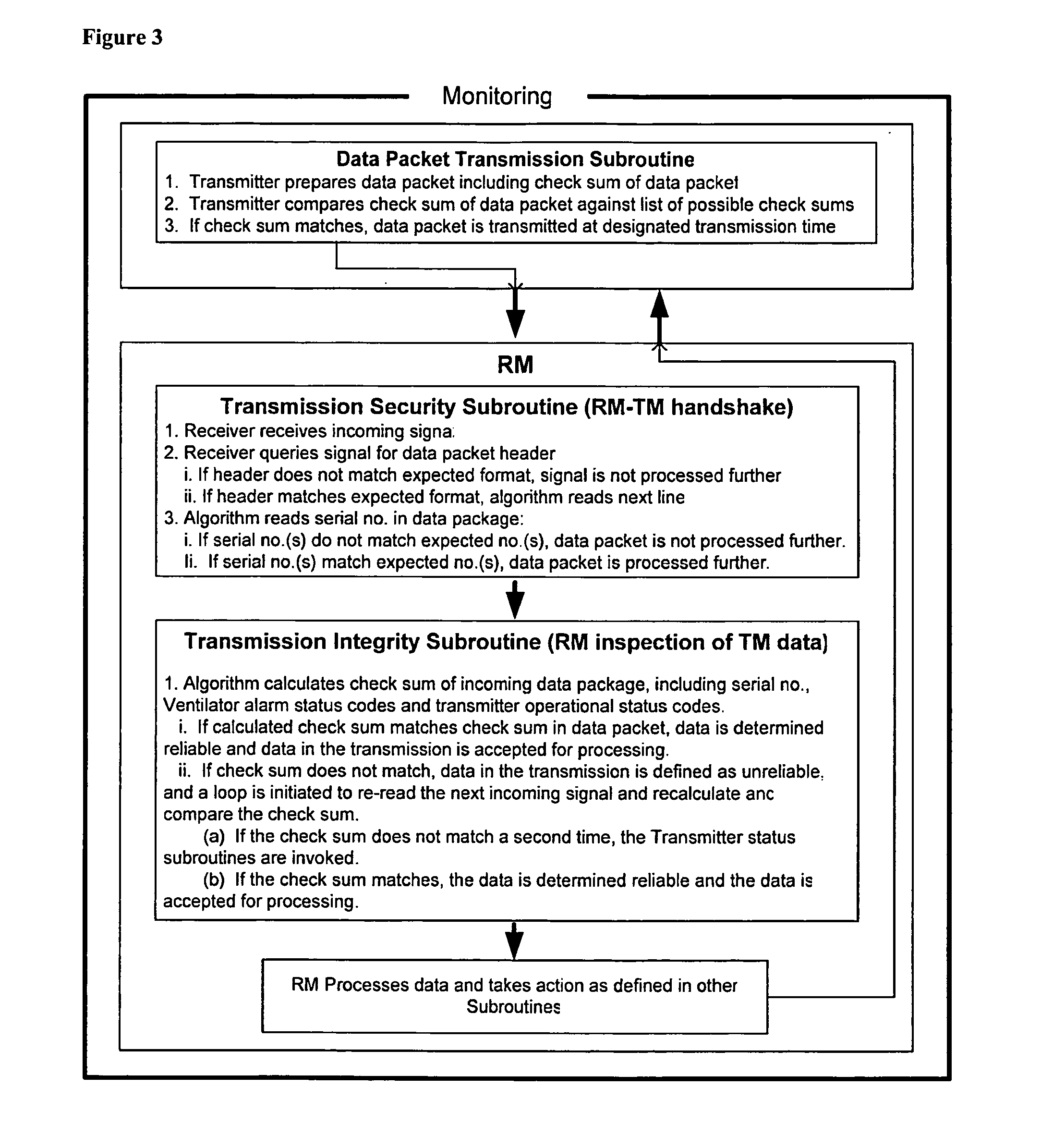System for wireless remote monitoring of alarm events of a medical device and corresponding patient
a wireless remote and alarm technology, applied in the field of life-critical medical equipment, can solve the problems of no wireless remote alarm transfer system commercialized for ventilation equipment, insufficient in many clinical situations, and significant limitations, and achieve the effect of reliable and convenient means
- Summary
- Abstract
- Description
- Claims
- Application Information
AI Technical Summary
Benefits of technology
Problems solved by technology
Method used
Image
Examples
Embodiment Construction
[0056]FIG. 1 describes an overall schematic of the invention. A medical device is being used to support a patient, such as a ventilator being used for respiratory support. The device typically includes a control subsystem and monitoring subsystem to control the operation of the device, and to monitor the operation of the medical device respectively. Often, the monitoring system detects problems with the patient or the medical device. The problems are typically communicated to a clinician or caregiver in the proximity of the patient and the medical device via a user interface. The user interface typically includes both audible and visual alarms, alerts, and messages. These information are typically prioritized into dire and non-dire events. Often, a critical care medical device has an alarm event output outlet connector and circuit, so that a wired remote alarm unit can be connected to the outlet, allowing the alarm status to be monitored remotely. The alarm unit is typically a box o...
PUM
 Login to View More
Login to View More Abstract
Description
Claims
Application Information
 Login to View More
Login to View More - R&D
- Intellectual Property
- Life Sciences
- Materials
- Tech Scout
- Unparalleled Data Quality
- Higher Quality Content
- 60% Fewer Hallucinations
Browse by: Latest US Patents, China's latest patents, Technical Efficacy Thesaurus, Application Domain, Technology Topic, Popular Technical Reports.
© 2025 PatSnap. All rights reserved.Legal|Privacy policy|Modern Slavery Act Transparency Statement|Sitemap|About US| Contact US: help@patsnap.com



